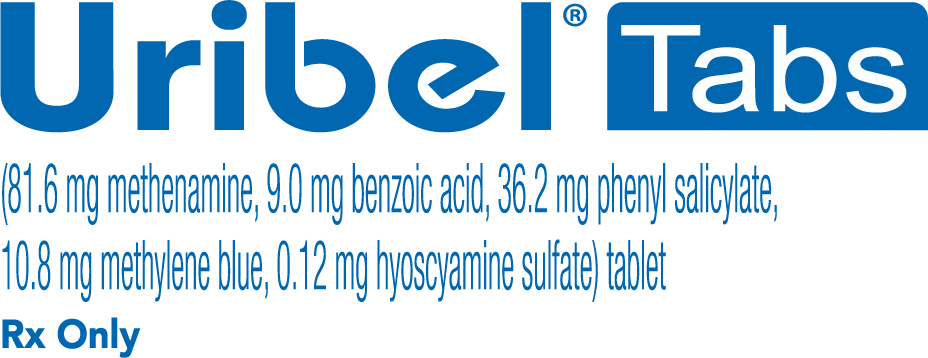Uribel® Tabs treat more than just pain
Uribel® Tabs are a prescription medicine used to relieve the discomfort, pain, frequent urge to urinate, and cramps/spasms of the urinary tract caused by a urinary tract infection or a diagnostic procedure. Some urinary medicines contain only 1 ingredient—an analgesic for pain relief. Uribel Tabs contain 5 ingredients that work together to treat your symptoms:
- A pain reliever to treat pain and burning sensations when you urinate
- An antispasmodic to help relax the smooth muscle tissue of your urinary tract
- A combination of antiseptic ingredients*


What to expect when taking Uribel Tabs
- Adult Dosing: Take one tablet 4 times a day; however, please follow your doctor’s instructions
- Older Children Dosing: Follow your doctor’s individualized dosing (Not recommended for use in children 6 and under)
- Take each Uribel Tabs dose with ample amounts of fluid
- Uribel Tabs may be used in conjunction with antibiotic therapies or other medicines1,2; however, ask your doctor to be sure there are no potential drug interactions
- You should not take more than the recommended dose of Uribel Tabs
- Uribel Tabs typically cause your urine to turn blue or bluish-green and may also affect the color of your stool. This is a harmless effect
*Uribel Tabs do not replace antibiotic therapy prescribed by your healthcare professional.

Each dose is one tablet that should
be taken with plenty of fluid.
be taken with plenty of fluid.
References
- McPhee JS, Papadakis MA, eds. Current Medical Diagnosis and Treatment. New York, NY: McGraw-Hill Medical; 2009: 828-838.
- Panzera AK. Interstitial cystitis/painful bladder syndrome. Urol Nurs. 2007 Feb:27(1):13-19.


